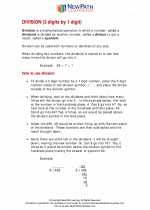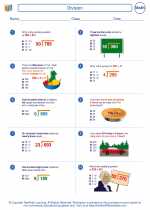Tessellations
A tessellation is a pattern of shapes that fit perfectly together without any gaps or overlaps. These shapes can be simple, such as triangles or squares, or more complex, such as hexagons or irregular polygons. Tessellations are a form of mathematical art and can be found in nature, architecture, and art throughout history.
Types of Tessellations
There are three main types of tessellations:
- Regular Tessellations: These are made up of one regular polygon, such as equilateral triangles, squares, or hexagons, that fit together to cover a plane without any gaps or overlaps.
- Semiregular Tessellations: These are made up of two or more regular polygons, with the same arrangement of shapes meeting at each vertex.
- Irregular Tessellations: These are made up of irregular polygons that fit together to cover a plane without any gaps or overlaps.
Study Guide
Here are some key concepts to understand when studying tessellations:
- Types of Tessellations: Understand the differences between regular, semiregular, and irregular tessellations and be able to identify examples of each type.
- Transformations: Learn about the transformations, such as translation, rotation, and reflection, that can be used to create tessellations.
- Tessellation Artists: Explore the work of artists who have used tessellations in their art, such as M.C. Escher.
- Mathematical Properties: Understand the mathematical principles behind tessellations, such as the angles and shapes that fit together to create a tessellating pattern.
By understanding these concepts, you will be able to recognize and create tessellating patterns and appreciate the mathematical and artistic beauty of tessellations.
.◂Math Worksheets and Study Guides Sixth Grade. Division
Study Guide Division
Division  Worksheet/Answer key
Worksheet/Answer key Division
Division  Worksheet/Answer key
Worksheet/Answer key Division
Division  Worksheet/Answer key
Worksheet/Answer key Division
Division 

 Worksheet/Answer key
Worksheet/Answer key
 Worksheet/Answer key
Worksheet/Answer key
 Worksheet/Answer key
Worksheet/Answer key

The resources above cover the following skills:
Connections to the Grade 6 Focal Points (NCTM)
Number and Operations: Students' work in dividing fractions shows them that they can express the result of dividing two whole numbers as a fraction (viewed as parts of a whole). Students then extend their work in grade 5 with division of whole numbers to give mixed number and decimal solutions to division problems with whole numbers. They recognize that ratio tables not only derive from rows in the multiplication table but also connect with equivalent fractions. Students distinguish multiplicative comparisons from additive comparisons.